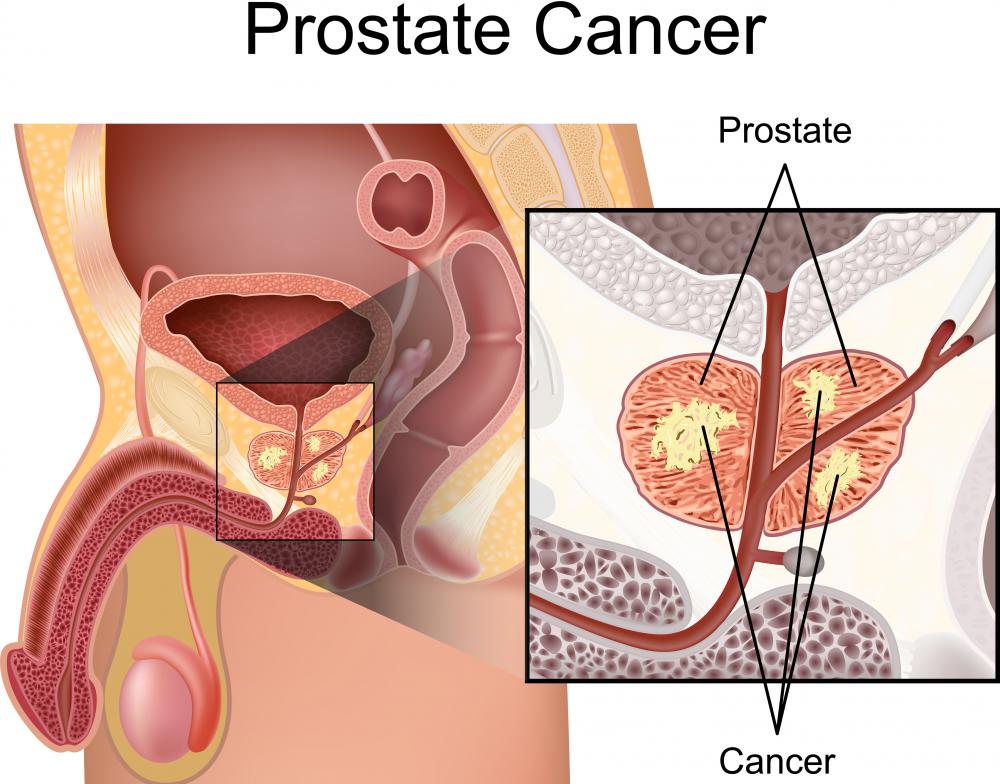At WiseGEEK, we're committed to delivering accurate, trustworthy information. Our expert-authored content is rigorously fact-checked and sourced from credible authorities. Discover how we uphold the highest standards in providing you with reliable knowledge.
What Is Prostate Cancer Staging?
Prostate cancer staging is a process that determines the extent of prostate cancer spread in an individual. Most modern staging determinations are done using a system known as TNM, though some doctors rely on an older staging system called Whitmore-Jewett staging. A variety of clinical and imaging tests is usually performed to determine prostate cancer staging. Staging is used to determine viable treatment options, as well as to provide a general prognostic category.
When a person is diagnosed with prostate cancer, the next step is to determine the spread and scope of cancerous growth. How far a tumor has spread may greatly influence treatment options and survival chances. Generally, prostate cancer that remains in the prostate and has not entered the lymph nodes or moved to any other bodily tissue is the easiest to fight or cure completely.

The TNM prostate cancer staging process bases conclusions on three primary categories: the size of the tumor, the infection of lymph nodes, and the presence of metastatic tumors. In addition, the TNM scale takes into consideration another staging tool known as the Gleason scale, which determines how closely the infected prostate tissue resembles normal tissue. TNM prostate cancer staging divides results into four categories, known as stages I-IV. Stage I patients generally have a very small primary tumor, no sign of lymph node spread, no sign of metastasis, and a low Gleason scale rating. Stage IV patients, by contrast, shows a tumor that is spreading to nearby organs, signs of lymph node infection, some signs of metastasis, and a high Gleason scale rating.

The tests used to determine prostate cancer staging typically rely on a blend of physical examination and imaging procedures. Physical exams may include rectal scans, lymph node biopsies, and a detailed medical examination and history. Imaging techniques may include radioactive body scans, computed tomography (CT) scans, and magnetic resonance imaging (MRI) scans. Radioactive body scans use a low-grade radioactive material injected into the veins, which is drawn toward cancerous areas. This type of scan can help show any metastatic infections anywhere in the body. CT scans are used primarily for assessing lymph node damage, while MRI scans can create a detailed image of the prostate area.
The results of prostate cancer staging tests allow doctors to determine the best course of treatment. Depending on the staging and the overall health of the patient, radiation treatments, surgery, hormone therapy, or a blend of these treatments may be advisable. In very low-grade stage I cancers, no treatment beyond regular examinations may be ordered. In high-grade stage IV cancers, which are frequently incurable, patients may opt to forgo treatment.
AS FEATURED ON:
AS FEATURED ON:












Discuss this Article
Post your comments